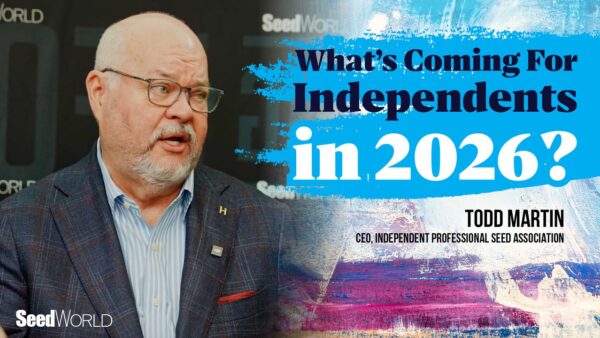Developing solutions for big issues — like delivering on the 21st century food production challenge — requires innovation and new ways of thinking. Take, for example, soybean breeding.
The industry’s approach to this discipline has long been characterized as an art and can best be described as laborious and inconsistent. Success depended on breeders’ intuition, studies rooted in trial and error and a lot of luck. Given the current business outlook for agriculture, which for growers translates to a challenging commodity landscape and for ag companies can be observed in the unprecedented industry consolidation, both parties need more than luck. Growers need soybean varieties that are engineered to perform well in very unique environments. Companies need to be smarter and more strategic in their research and development efforts so they can bring high-yielding soybean varieties to growers more quickly.
For Syngenta, harnessing the power of data analytics has been the single most important contributor to achieving our research and development goals. Nearly a decade ago, we began using open-innovation platforms to develop the data-driven tools that differentiate our work in plant genetics. This effort has revolutionized the way we breed plants — by replacing guesswork with math, science and contributions from some of the most brilliant minds.
Online platforms, in particular, allow us to cast as wide a net as possible in the hunt for new talent, while supplementing the important contributions of our employees. Online tools open our industry to new ideas from multiple continents and diverse academic disciplines. Syngenta has been able to work closely with highly skilled experts who do not need to uproot themselves to take advantage of a business opportunity and contribute to our research efforts.
The key to optimizing an open innovation platform is perseverance and an understanding of the platform’s limitations. It’s also important to strike the right balance when seeking wisdom in the crowd. Crowds can accomplish more than a single, talented individual. And extreme or bad ideas tend not to be heard over the general consensus. This is open collaboration’s greatest strength, and at the same time, its greatest weakness. The general consensus trends toward group think, but disruptive innovation comes from the sort of extreme ideas that the crowd naturally rejects. In other words, ground-breaking ideas come from individuals and small teams.
The downside of open collaboration is that it requires serious effort to evaluate the solutions offered. Sometimes, the initial question posed is not phrased properly or sends participants in the wrong direction since their expertise lives outside the world of agriculture. Open collaboration is a process that requires constant communication, feedback, iteration and improvement.
At the same time, the process is inherently efficient, as solving problems in parallel can produce results more cost-effectively and quickly than the in-house alternative of using employees to tackle problems one-by-one. The old-fashioned sequential problem-solving method, where in-house teams move from one problem to the next, is both more expensive and takes longer to reach a solution.
Of course, in-house talent plays a vital role in the process, and Syngenta employees have a key role in evaluating responses to the open collaboration challenges.
Certainly, there are multiple ways to accomplish our goals, but there is unique value in engaging analytics experts who bring a wealth of diverse ideas and skillsets beyond the traditional ag audience.










